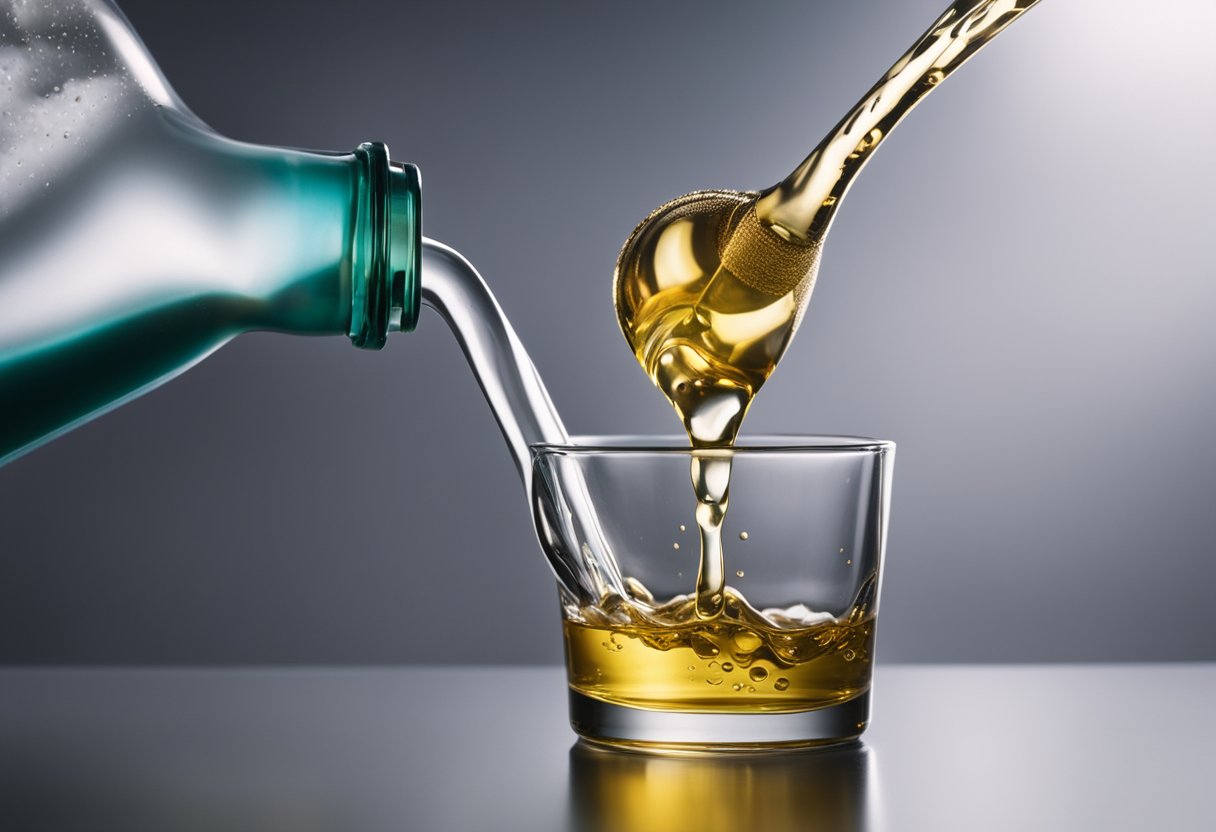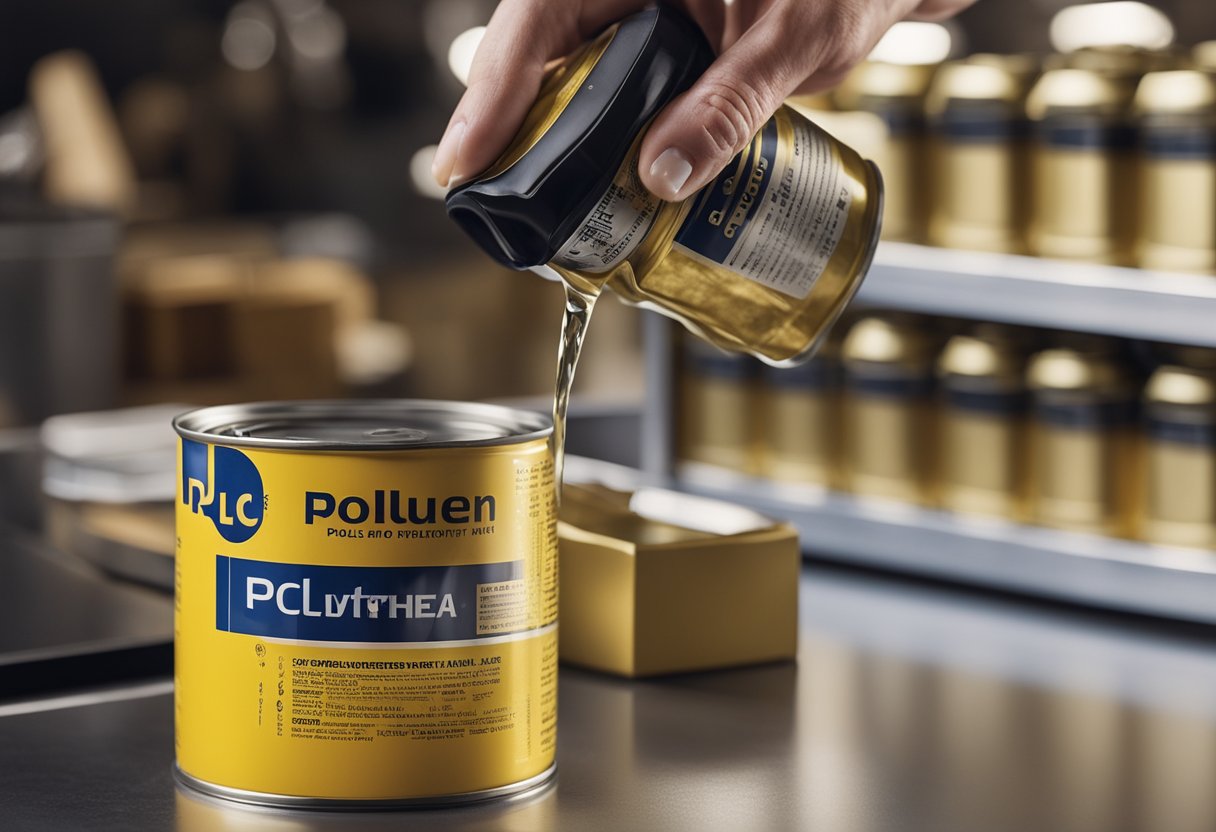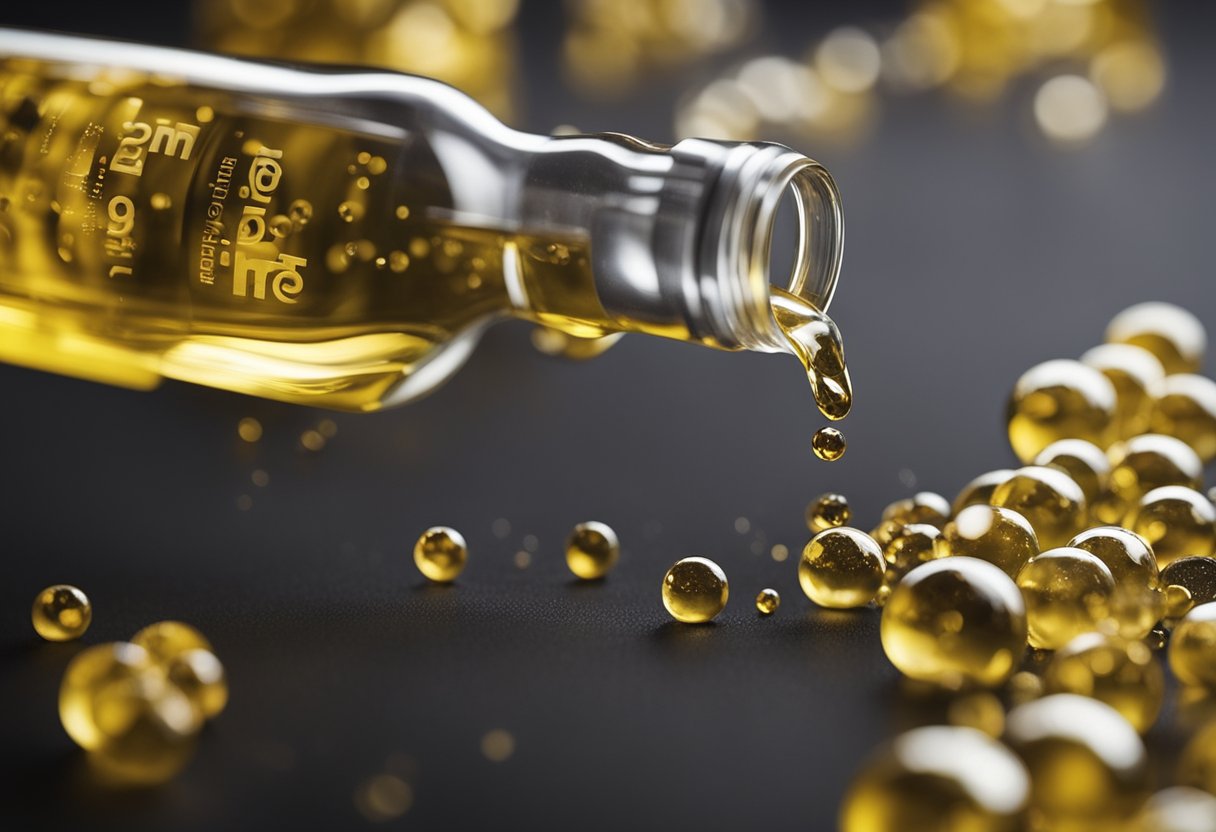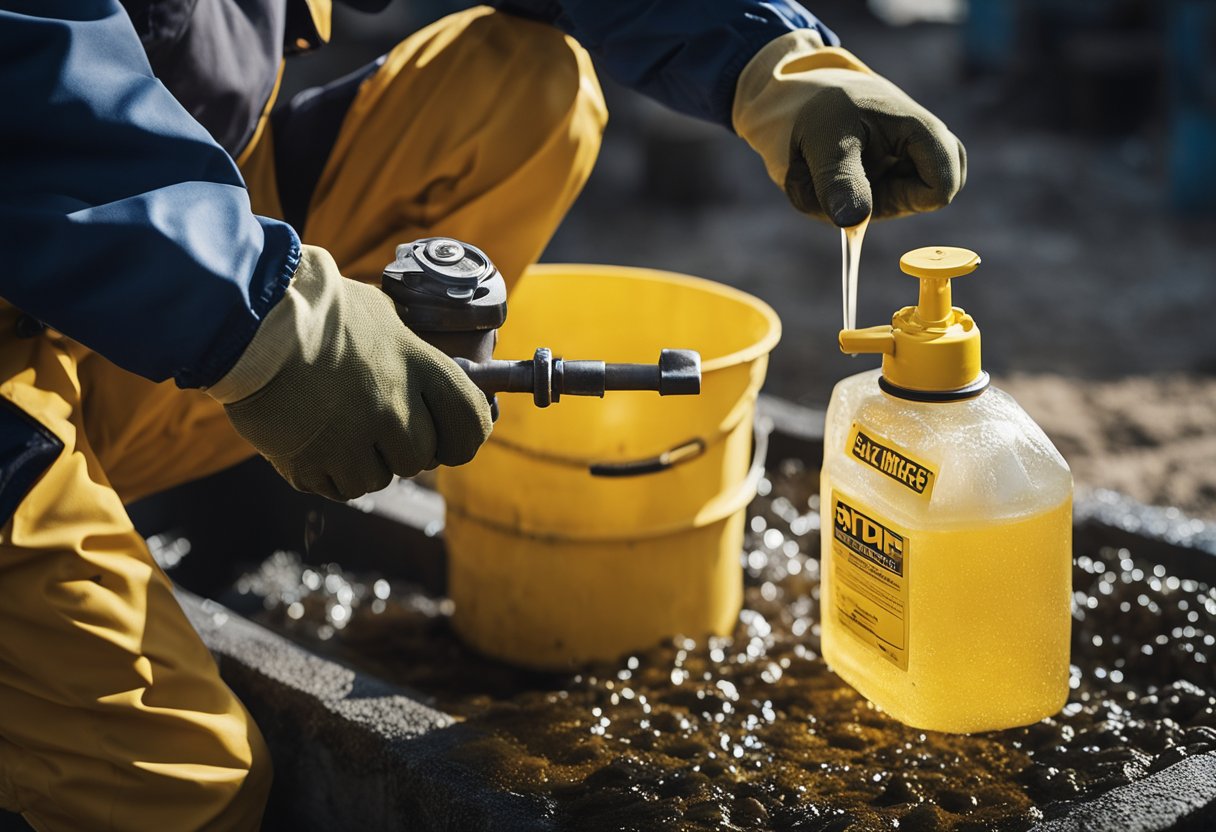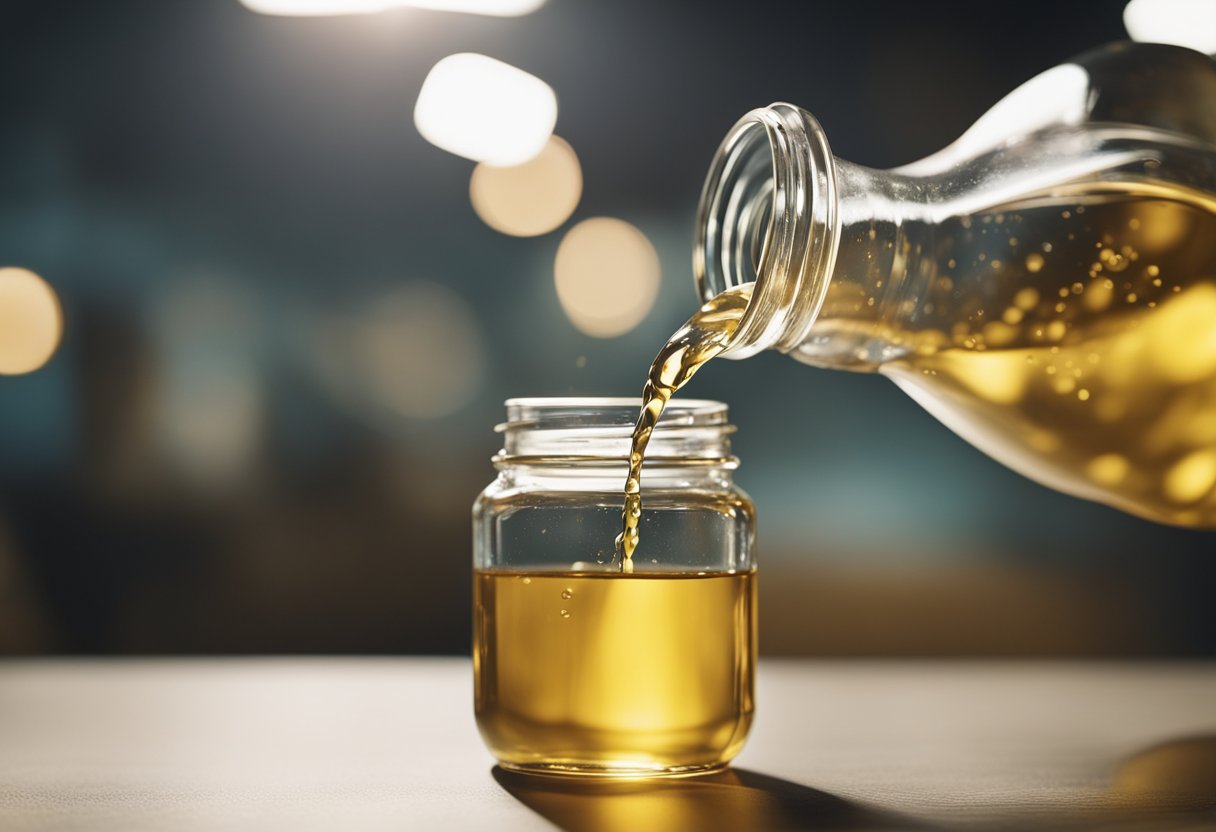Polyurethane and mineral oil are two common finishes used on wood surfaces. Both finishes have their unique qualities and advantages. However, can you apply polyurethane over mineral oil? This is a common question that woodworkers and DIY enthusiasts ask. In this article, I will provide a comprehensive answer to this question and discuss everything you need to know about using polyurethane over mineral oil.
Understanding Polyurethane and Mineral Oil
Polyurethane is a popular finish that creates a hard, durable, and glossy surface on wood. It is ideal for high-traffic areas and surfaces that require protection from water and scratches. Mineral oil, on the other hand, is a natural oil that is often used to condition and protect wooden utensils, cutting boards, and other food-related items. It is food-safe, non-toxic, and easy to apply.
Preparation and Application
To apply polyurethane over mineral oil, you need to prepare the surface properly. This involves cleaning the surface, removing any dirt, dust, or grease, and sanding the surface lightly to create a rough texture that the polyurethane can adhere to. You can then apply the polyurethane using a brush, roller, or sprayer, following the manufacturer’s instructions.
Key Takeaways
- Polyurethane can be applied over mineral oil if the surface is prepared properly.
- The adhesion and bonding between the two finishes can be improved by sanding and cleaning the surface.
- Polyurethane provides a hard, durable, and glossy finish, while mineral oil is food-safe and non-toxic.
Understanding Polyurethane and Mineral Oil
Polyurethane and mineral oil are two popular wood finishes that are used for different purposes. Polyurethane is a synthetic product that is used to create a protective layer over the surface of the wood. It is available in both oil-based and water-based forms. Mineral oil, on the other hand, is a natural product that is used to nourish and protect the wood grain. It is a non-drying oil, which means that it never hardens or dries completely.
When it comes to applying polyurethane over mineral oil, there are a few things to keep in mind. First, it is important to ensure that the mineral oil has dried and cured completely before applying the polyurethane. This is because polyurethane cannot be applied onto a non-drying oil finish. If you try to apply polyurethane over mineral oil that has not dried, the polyurethane will not adhere properly to the surface, and you will end up with a poor finish.
If you are looking for a wood finish that is both protective and nourishing, then you may want to consider using a drying oil, such as Danish oil, boiled linseed oil (BLO), or tung oil. These oils penetrate the wood grain and harden over time, creating a durable and long-lasting finish. Once the oil has dried and cured, you can apply a polyurethane finish over the top to create a film finish that will protect the wood from scratches, stains, and moisture.
When it comes to choosing a polyurethane finish, you have the option of using either an oil-based or water-based product. Oil-based polyurethane is more durable and provides a warmer, amber-toned finish. However, it takes longer to dry and can emit strong fumes during application. Water-based polyurethane, on the other hand, dries faster and emits fewer fumes. It also provides a clearer, more natural finish.
Preparation and Application
https://www.youtube.com/watch?v=7uoZSWof2DM&embed=true
When applying polyurethane over mineral oil, proper preparation is essential to ensure a successful finish. Here are the steps I follow:
-
Clean the surface: Before applying polyurethane, make sure the surface is clean and free of dust and debris. I use a cloth dampened with mineral spirits to wipe down the surface.
-
Sand the surface: Sanding the surface with fine-grit sandpaper (220 grit or higher) will help the polyurethane adhere to the surface better. I use a sanding block to ensure an even sanding.
-
Choose the application method: Polyurethane can be applied using a brush, spray, or cloth. I prefer using a brush for better control and even coverage.
-
Apply the polyurethane: Apply the polyurethane in thin, even coats, following the grain of the wood. I wait for each coat to dry before applying the next coat.
-
Sand between coats: Sanding between coats with fine-grit sandpaper (220 grit or higher) will help smooth out any imperfections and ensure a smooth finish.
-
Use a tack cloth: After sanding, use a tack cloth to remove any dust and debris before applying the next coat.
-
Ensure proper ventilation: When working with polyurethane, it’s important to work in a well-ventilated area. I make sure to open windows and doors and use a fan to circulate air.
By following these steps, I have been able to achieve a smooth and durable finish when applying polyurethane over mineral oil on various types of wood.
Adhesion and Bonding
When it comes to applying polyurethane over mineral oil, the key concern is adhesion. Adhesion refers to the ability of the polyurethane to stick to the oiled wooden surface. If the polyurethane does not bond well with the surface, it can lead to adhesion problems, which can cause the finish to fail.
One way to ensure good adhesion is to sand the oiled wooden surface thoroughly before applying the polyurethane. Sanding helps to remove any excess oil and smooth out the surface, creating a better bonding surface for the polyurethane.
Another way to ensure good adhesion is to use a polyurethane that is specifically formulated for use over oil finishes. These polyurethanes are designed to bond well with oiled surfaces, reducing the risk of adhesion problems.
It is important to note that adhesion problems are more likely to occur if the oil has not completely dried and cured. If the oil is still sticky or tacky, the polyurethane will not bond well with the surface, leading to adhesion problems.
In summary, good adhesion is crucial when applying polyurethane over mineral oil. Sanding the surface and using a polyurethane specifically formulated for use over oil finishes can help ensure good adhesion and reduce the risk of adhesion problems.
Finishing and Curing
https://www.youtube.com/watch?v=qUgZefTPESQ&embed=true
When it comes to finishing wood, it’s important to understand the curing and drying process. Curing is the process of the finish hardening and reaching its full strength, while drying refers to the solvent evaporating from the finish. The curing time for polyurethane over mineral oil can be longer than other finishes due to the non-drying nature of mineral oil.
It is essential to allow the mineral oil to dry and cure before applying polyurethane. Mineral oil is a non-drying oil, which means it will not dry-out or cure. Therefore, polyurethane will not bind to a mineral oil finish. The mineral oil needs to be removed from the surface of the wood with a solvent before applying a drying finish, such as polyurethane.
Staining the wood before applying mineral oil can add color to the wood. However, it is important to note that the color may be affected by the mineral oil. It is recommended to test the stain on a small area to ensure the desired color is achieved.
When it comes to topcoats, there are different options available, such as lacquer, shellac, varnish, and paint. Dewaxed shellac can be used as a sealer before applying polyurethane. Waxed shellac is not recommended as it can interfere with the adhesion of the polyurethane.
When applying polyurethane, it is important to use a smooth, self-leveling brush to avoid bubbles and brush marks. A water-based polyurethane can be used for easier cleanup, but it may not offer the same level of protection as an oil-based polyurethane.
It is recommended to stir the polyurethane thoroughly before use to ensure the solids are well mixed. Applying multiple thin coats of polyurethane can offer better protection than a single thick coat. It is important to allow each coat to dry and cure before applying the next coat.
Safety and Precautions
When working with polyurethane and mineral oil, it is important to take proper safety precautions to ensure your health and the health of those around you. Here are some tips to keep in mind:
-
Safety Gear: Always wear appropriate safety gear, such as gloves, goggles, and a respirator mask, when working with polyurethane and mineral oil. This will help protect you from any potential health hazards.
-
Humidity: Be aware of the humidity in your workspace. High humidity can cause polyurethane to dry more slowly, which can lead to a tacky finish. If the humidity is too low, it can cause the finish to dry too quickly, leading to a rough surface. Aim for a humidity level between 40-60% for optimal results.
-
Ventilation: It is important to work in a well-ventilated area when working with polyurethane and mineral oil. This will help prevent the buildup of fumes, which can be harmful if inhaled. If possible, work outdoors or in a room with plenty of windows and doors to allow for proper ventilation.
-
Clean Up: When you are finished working with polyurethane and mineral oil, be sure to clean up any spills or drips immediately. Use a rag or paper towel to wipe up any excess finish, and dispose of it properly. Do not leave any rags or paper towels soaked in finish lying around, as they can be a fire hazard.
By following these safety precautions, you can ensure that your work with polyurethane and mineral oil is safe and successful.
Maintenance and Troubleshooting
As with any other finish, proper maintenance is essential to ensure the longevity of your polyurethane over mineral oil finish. Here are a few tips to help you maintain your finish:
- Clean the surface regularly with a soft, damp cloth. Avoid using abrasive cleaners or harsh chemicals, as they can damage the finish.
- If you need to remove stubborn stains or dirt, use mineral spirits or another solvent recommended by the manufacturer. Apply the solvent to a clean cloth and gently rub the affected area until the stain is removed.
- If you notice any blemishes or imperfections in the finish, you can use a clear finish to touch up the affected area. Apply a small amount of the clear finish to a clean cloth and gently rub the affected area until the blemish or imperfection is no longer visible.
- If you notice any strong odors coming from the finish, it may be a sign that the finish is not fully cured. In this case, you should allow the finish to dry and cure for a few more days before using the surface.
- If you notice any other issues with the finish, such as cracking or peeling, it may be a sign that the finish was not applied properly. In this case, you may need to sand down the affected area and reapply the finish.
By following these simple maintenance tips, you can ensure that your polyurethane over mineral oil finish remains beautiful and durable for years to come.
Polymerization and Coloration
Polyurethane is a polymer that undergoes a chemical reaction known as polymerization, which is the process of combining monomers to form a polymer. The reaction between the polyurethane and the air creates a hard, durable, and protective coating on the surface of the wood. When polyurethane is applied over mineral oil, it can still undergo polymerization, but it may not adhere as well as it would on an untreated surface.
Another factor to consider when applying polyurethane over mineral oil is coloration. Mineral oil can darken the wood, which may affect the final color of the finish. It is important to note that polyurethane itself does not significantly change the color of the wood. Therefore, if the wood has already been darkened by mineral oil, the final color of the polyurethane finish may be darker than expected.
To ensure the best possible outcome when applying polyurethane over mineral oil, it is recommended to follow the proper procedure. This includes thoroughly cleaning the surface of the wood, sanding it to ensure proper adhesion, and applying a sealer before applying the polyurethane. Some sources recommend using a dewaxed shellac sealer, such as Zinsser Sealcoat, to ensure proper adhesion of the polyurethane.
In summary, while polyurethane can be applied over mineral oil, it is important to consider the potential impact on polymerization and coloration. Following the recommended procedure can help ensure a durable and attractive finish.
Frequently Asked Questions
Can you apply polyurethane over butcher block oil?
Yes, you can apply polyurethane over butcher block oil. However, it is important to ensure that the oil has dried and cured before applying polyurethane. Applying polyurethane over wet oil can lead to adhesion problems, so it is recommended to wait at least 24 hours after oiling before applying polyurethane.
Is it possible to apply water-based polyurethane over Danish oil?
Yes, you can apply water-based polyurethane over Danish oil. However, it is important to ensure that the Danish oil has dried and cured before applying polyurethane. It is recommended to wait at least 72 hours after applying Danish oil before applying water-based polyurethane.
How long should Danish oil dry before applying polyurethane?
Danish oil should dry for at least 72 hours before applying polyurethane. This will ensure that the oil has fully cured and will allow for proper adhesion of the polyurethane.
Can polyurethane be applied over linseed oil?
Yes, you can apply polyurethane over linseed oil. However, it is important to ensure that the oil has dried and cured before applying polyurethane. Applying polyurethane over wet oil can lead to adhesion problems, so it is recommended to wait at least 24 hours after oiling before applying polyurethane.
Does mineral oil waterproof wood?
Mineral oil does not waterproof wood. While it can provide some water resistance, it is not a durable or long-lasting finish and will not provide complete waterproofing.
How can mineral oil drying time be accelerated?
Mineral oil drying time can be accelerated by applying a thin layer of oil and wiping off any excess with a clean cloth. This will help the oil to dry more quickly and evenly. Additionally, placing the oiled object in a warm, dry area can also help to speed up drying time.

Hi, I’m Sal Muller of Tooltrip.com. My DIY experience led me to understand essential power tools for home projects. Tooltrip.com guides enthusiasts and professionals in choosing right tools for any job. I provide concise top tool reviews for easier, efficient DIY.

